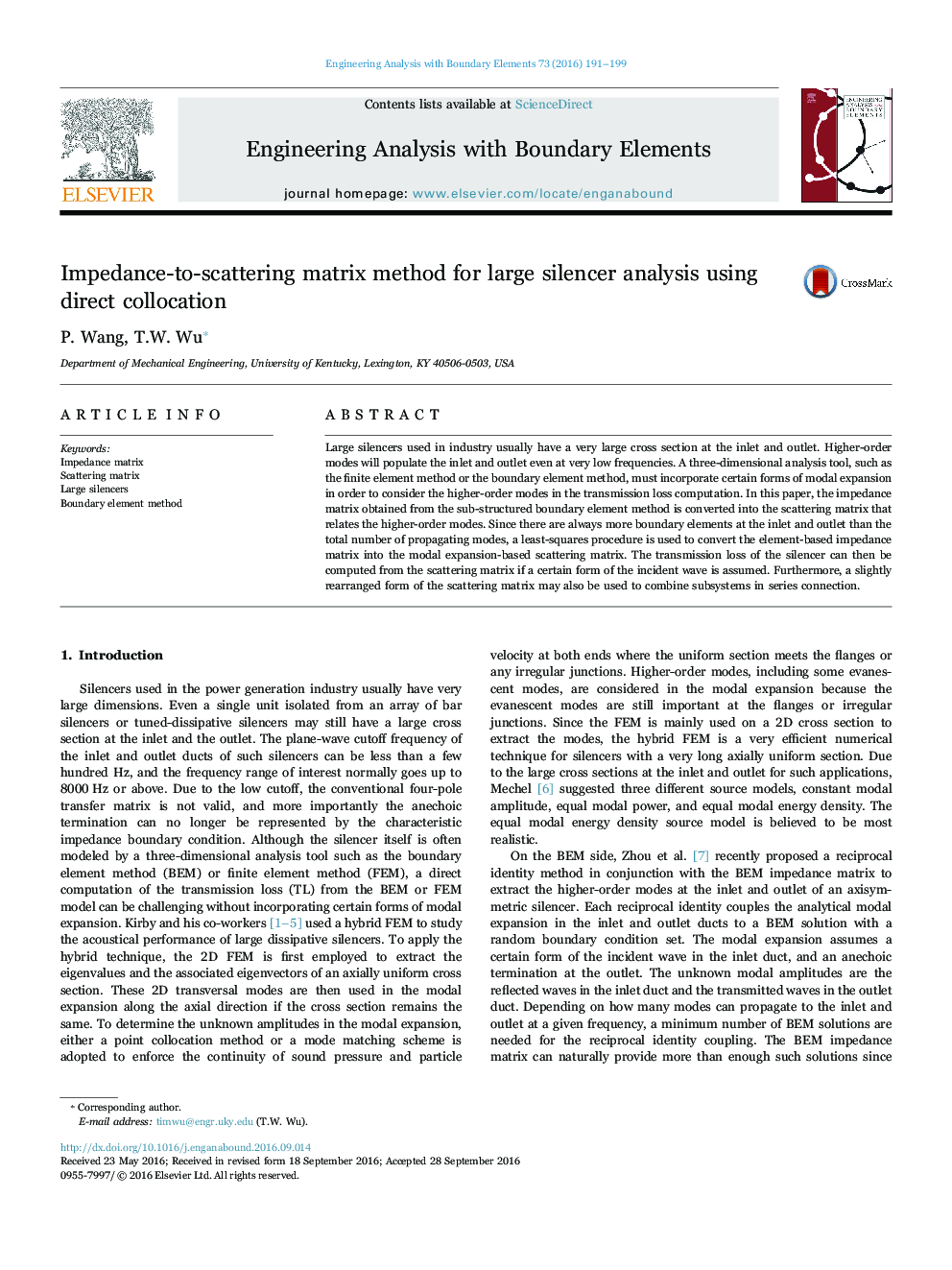| Article ID | Journal | Published Year | Pages | File Type |
|---|---|---|---|---|
| 4966120 | Engineering Analysis with Boundary Elements | 2016 | 9 Pages |
Abstract
Large silencers used in industry usually have a very large cross section at the inlet and outlet. Higher-order modes will populate the inlet and outlet even at very low frequencies. A three-dimensional analysis tool, such as the finite element method or the boundary element method, must incorporate certain forms of modal expansion in order to consider the higher-order modes in the transmission loss computation. In this paper, the impedance matrix obtained from the sub-structured boundary element method is converted into the scattering matrix that relates the higher-order modes. Since there are always more boundary elements at the inlet and outlet than the total number of propagating modes, a least-squares procedure is used to convert the element-based impedance matrix into the modal expansion-based scattering matrix. The transmission loss of the silencer can then be computed from the scattering matrix if a certain form of the incident wave is assumed. Furthermore, a slightly rearranged form of the scattering matrix may also be used to combine subsystems in series connection.
Related Topics
Physical Sciences and Engineering
Computer Science
Computer Science Applications
Authors
P. Wang, T.W. Wu,
